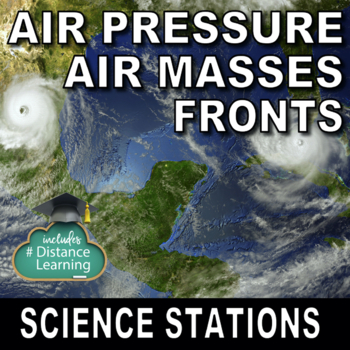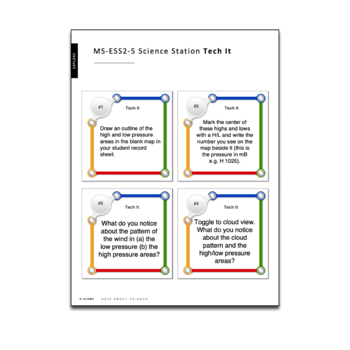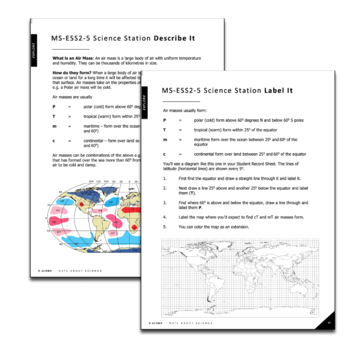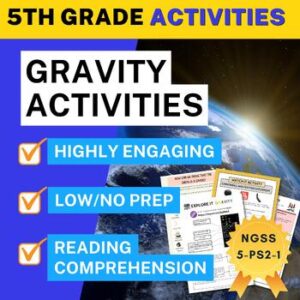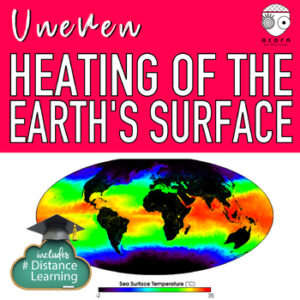Description
Your students will love learning about air pressure, air masses and fronts with these engaging activities. Easy to follow and fun to use and teach. This comprehensive science stations pack on the weather is specially designed to align with the NGSS Middle School MS-ESS2-5 standard “collect data to provide evidence for how the motions and complex interactions of air masses result in changes in weather conditions.”
A google classroom distance learning version is also included so you’re all set whether you have face to face classes or have to teach remotely. You can relax and teach knowing that you’ve got this covered.
Science Stations allows the students to collect data and infer weather patterns.
- ► Observe It – at this station the students will observe directly the effects of atmospheric pressure.
- ► Watch It – students watch a short video which explains why high and low pressure areas form. This is exceptionally well explained in this video.
- ► Tech It – at this station the students will go to a website which shows live atmospheric pressure readings. They will read the atmospheric pressure of today’s weather and input it into a blank map.
- ► Write It – at this station the students will write a short weather report for the evening news!
- ► Describe It – students read about the different types of air masses and answer questions.
- ► Label It – students read about the formation of air masses and label a blank map of the world showing where the air masses form. They can color in the map as an extension.
Related Products
- MS-ESS2-1 The Rock Cycle Science Stations Print and Distance Learning
- Plate Tectonics MS-ESS2-2 Complete 5E lesson Print and Distance Learning
- The Case for Continental Drift NGSS MS-ESS2-3 Print and Distance Learning
- Water Cycle MS-ESS2-4 Complete 5E lesson Print and Distance Learning
- Air Pressure, Air Masses and Fronts MS-ESS2-5 Print and Distance Learning
- Climate – Atmosphere and Ocean Currents, Coriolis Effect MS-ESS2-6
NGSS and Next Generation Science Standards are a registered trademark of Achieve. Neither Achieve nor the lead states and partners that developed the Next Generation Science Standards was involved in the production of, and does not endorse, this product.

